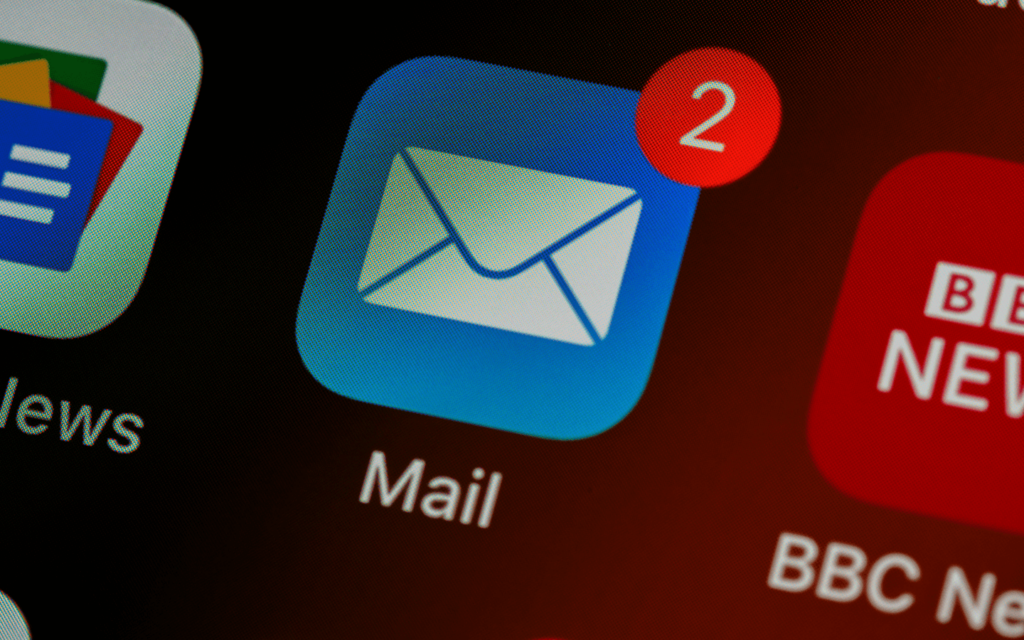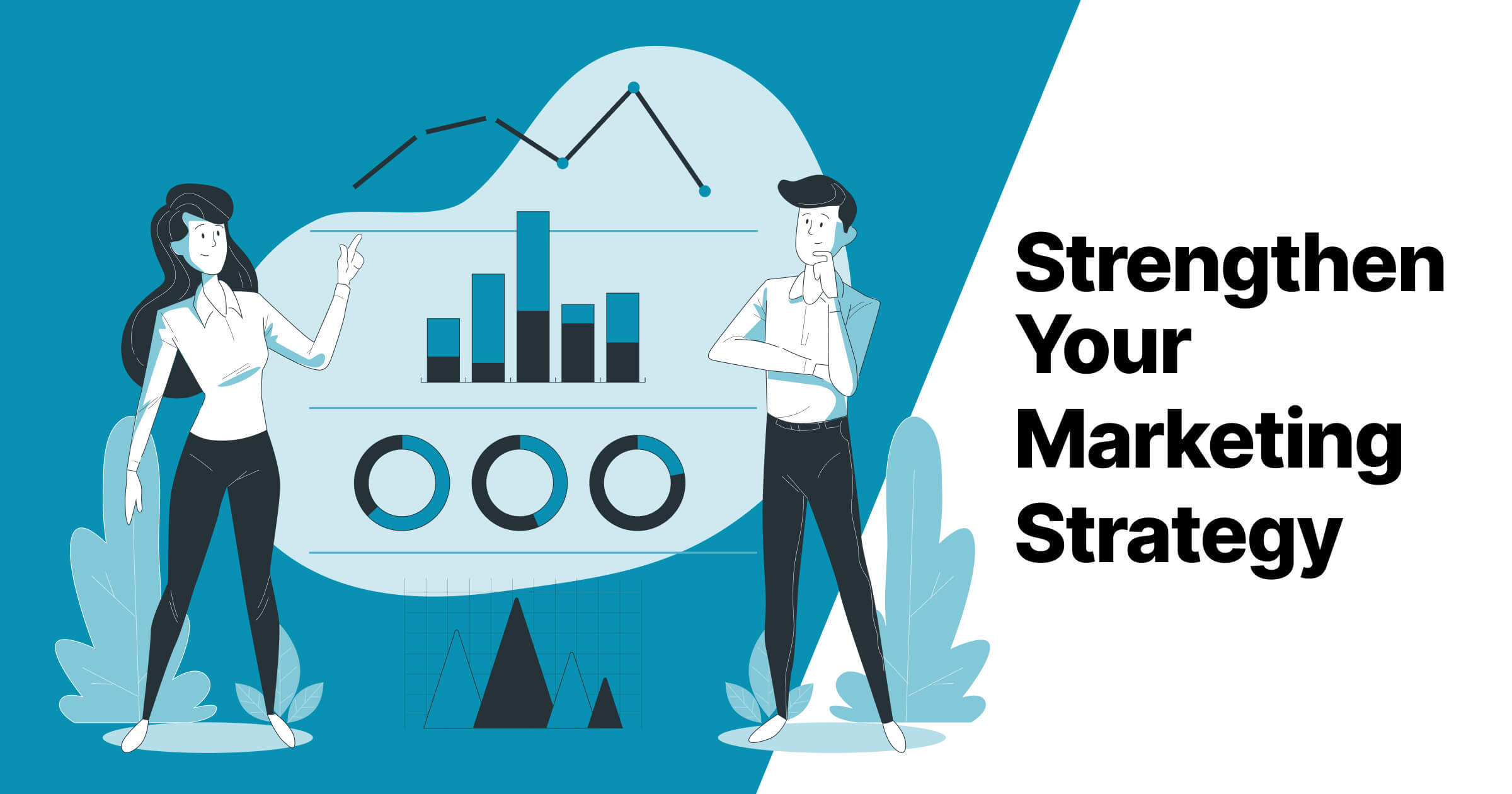While digital marketing might appear intricate and daunting, in reality, it’s quite manageable. Despite the initial learning curve to grasp the fundamentals, anyone genuinely dedicated to business success must prioritize acquiring a comprehensive understanding of digital marketing, its various distinct categories, and the ways in which they can enhance your business’s return on investment (ROI).
Table of Contents
Digital Evolution
It is no secret that digital marketing now far surpasses traditional media and advertising in both budget and results. Due to analytics and targeting, you can now track all of your adverts online and see exactly where your money is going, and sales and lead generation reports are now available in just a few clicks.
As of 2024, digital marketing and advertising have significantly overtaken traditional advertising in terms of budget allocation. Digital ad spend now accounts for more than 70% of the total advertising budget, marking the first time in history that such a large proportion of advertising dollars is invested in digital platforms. This trend reflects the growing dominance of digital media in the global advertising market, emphasizing the importance of digital strategies for businesses aiming to reach and engage their target audiences effectively.
The decline of traditional marketing can be attributed to several factors:
| Factor | Description |
| Digital Dominance | Shift towards digital platforms is driven by changing consumer behaviors and technological advancements. More consumers spending time online makes digital channels more effective for targeted advertising and engagement. |
| Measurability and Analytics | Digital marketing offers superior tracking and analytics capabilities compared to traditional methods. This leads to more effective measurement of ROI and campaign performance, favoring digital over traditional methods. |
| Personalization and Engagement | Digital platforms provide more opportunities for personalization and engagement, crucial for modern marketing strategies. Social media, email marketing, and targeted online ads can be customized to individual preferences, a challenge with traditional media like TV and print. |
| Cost-Effectiveness | Digital marketing, especially for small and medium-sized businesses, is often more cost-effective. The ability to reach a large audience at a lower cost compared to traditional media is a key factor in its growing preference. |
| Changing Media Consumption Habits | There is a steady decline in traditional media consumption, like TV and print newspapers, particularly among younger demographics. The rise of streaming services, online news, and social media platforms are shifting advertiser focus. |
| Increased Mobile Usage | The ubiquity of smartphones has transformed marketing. Mobile marketing and advertising have become essential in digital strategies, significantly impacting traditional marketing’s market share. |
In summary, while traditional marketing methods like TV, print, and radio still hold relevance, especially in certain demographics and regions, the global trend is leaning heavily towards digital. This shift is driven by digital’s adaptability, cost-effectiveness, and ability to provide measurable results aligned with modern consumer behaviors.

With all of this in mind, let’s explore the 12 pillars of digital marketing that you should familiarize yourself with. But first, we will define the meaning of the broader term – Digital Marketing.
Digital Marketing Explained
This term is used to describe all efforts conducted through the Internet and electronic devices to market and promote a business. Businesses will use the power and influence of social media and search engines to increase sales and brand awareness, as well as attracting new prospects and retaining current customers.

1. Search Marketing
Search marketing encompasses strategies and techniques to increase website visibility and traffic from search engines, utilizing both organic and paid methods.
- SEO (Search Engine Optimization): This refers to enhancing a website organically, focusing on content optimization, technical elements, keyword research, and building backlinks. SEO aims to make web pages easily indexable and rank for relevant searches, relying on high-quality content, ease of navigation, mobile-friendliness, and fast loading times.
- SEM (Search Engine Marketing): Encompassing pay-per-click (PPC) advertising, SEM involves bidding on keywords relevant to your business to display ads in search results. These ads incur costs only when clicked, offering a cost-efficient way to reach new audiences and achieve immediate visibility for short-term goals.
The overarching term covering both SEO and paid search efforts is commonly referred to as search marketing. A robust search marketing strategy, blending organic SEO and targeted SEM, can lead to increased website visits, improved user engagement and conversions, lower costs per lead/sale, and higher revenues. Success hinges on developing content that resonates with what users are actively searching for and continually adapting to changing search trends and consumer behaviors.

2. Content Marketing
Content marketing refers to the strategic creation and distribution of valuable, relevant content to attract, engage, and retain customers. The core focus is on providing consistently helpful information rather than direct promotional messaging. Valuable content should always be the focal point of your marketing.
Benefits of Content Marketing
Investing in content provides several advantages:
- Increased lead generation and sales
- Lower customer acquisition costs
- Improved brand awareness and loyalty
- Thought leadership and industry authority status
Quality content establishes credibility and trust as an invaluable resource for customers. This nurtures ongoing relationships rather than one-time transactions.
Best Practices
To ensure content effectiveness, brands should:
- Identify target buyer personas and their interests to create relevant information
- Promote content across owned, earned, and paid media channels
- Set measurable objectives and optimize based on performance data
- Develop documented processes for timely content production
- Maintain brand consistency across visual identity and messaging
- Balance educational thought leadership content with promotional offerings
The most successful brands like Coca-Cola and Nike integrate content across their digital strategies. But even small businesses can drive impressive ROI through thoughtful content catered to their customers. The versatility of quality content makes it universal.

3. Digital PR
Digital Public Relations (Digital PR) encompasses online strategies aimed at bolstering brand awareness and recognition. It achieves this by securing earned media placements through nurturing relationships and distributing compelling content.
Key Digital PR Assets
An effective digital PR strategy leverages a variety of assets, each contributing uniquely to brand promotion:
- Social Media Influencers: Industry personalities with significant followings, capable of swaying audience opinions and behaviors.
- Bloggers: Subject matter experts who can endorse and discuss the brand within their established readership and communities.
- Online Journalists: Writers for digital publications who can provide credible media coverage.
- Brand Advocates: Loyal customers who organically promote products, enhancing brand credibility.
- Employee Ambassadors: Team members who embody the brand’s values and amplify its message online.
Digital PR Tactics
Digital PR employs both organic and paid tactics to maximize brand visibility:
- Contributor Articles: Byline articles authored by the brand or its representatives, enhancing thought leadership.
- Influencer Partnerships: Collaborative content creation with influencers, tapping into their audience trust and loyalty.
- Product Seeding: Distributing free samples to generate reviews and word-of-mouth promotion.
- Giveaways & Contests: Engaging audiences with competitions to stimulate user-generated content and create buzz.
Digital PR Results
A well-executed digital PR strategy can yield significant, measurable improvements:
- Website Traffic: Attracting more visitors to the brand’s digital platforms.
- Audience Reach: Expanding the brand’s visibility to new market segments.
- Backlinks: Gaining high-quality links that enhance SEO.
- Brand Mentions: Increasing the frequency and quality of brand references in digital media.
- Conversions and Sales: Driving customer actions that lead to tangible business outcomes.
These results not only boost the brand’s online presence but also solidify its market position and authority. The integration of digital PR with overall marketing strategies, including content marketing and SEO, creates a unified approach to digital brand building. Emphasizing ethical practices and authenticity, particularly in influencer collaborations and content creation, ensures trust and transparency with the audience. Staying attuned to emerging trends and adapting digital PR strategies accordingly is vital in the rapidly evolving digital landscape. Including visually engaging and multimedia content can further enhance the impact of digital PR campaigns.

4. Social Media Marketing (SMM)
Social media marketing (SMM) refers to the use of social platforms and communities to drive brand awareness, engagement, and conversions. This involves creating, sharing, and promoting visual, written, video and other multimedia content tailored for specific social sites.
Crafting Content for Each Platform
Understanding the unique users and capabilities of each channel allows for the development of suitable content formats. This means leveraging features like Instagram Reels or Twitter Threads based on their audience preferences. Aligning with the tone and mechanics of each platform results in higher relevance and resonance.
Setting Goals Based on Key Performance Indicators
Approaching SMM with clearly defined marketing KPIs allows for campaign optimization and effective budget allocation between paid and organic activity. Typical SMM goals include increasing brand reach, driving website traffic, improving engagement rates and ultimately conversions. Each platform offers analytics into these metrics.
SMM for All Business Sizes
The wide range in functionality spanning informational company profiles, organic community-building, paid advertising, and branded imagery means SMM provides value for enterprises and SMEs alike. Dedicating teams or having a single community manager handle activities based on resources.
SMM gives every business the opportunity to reach, engage, and nurture customer relationships through social conversations and community interactions. The versatility cementing its indispensable role in digital strategies.

5. Display Advertising
Display advertising encompasses a range of visually-focused online ads aimed at enhancing brand visibility and driving website traffic. It utilizes elements like images, videos, and rich interactive media, distinct from text-based platforms, to captivate specific audiences. These ads are served across various websites and applications, offering tailored engagement opportunities.
Types of Display Advertising
Display advertising offers a spectrum of formats to align with different campaign goals:
- Banner Ads: Simple, static or animated graphics displayed across web pages.
- Rich Media: Engaging and interactive ads, often featuring animations.
- Overlay Ads: Ads that appear above website content, offering prominent visibility.
- Native Ads: Designed to mirror the form and function of surrounding content.
- Video Ads: Utilize visual storytelling, integrated pre, mid, or post-roll in media content.
- Mobile Ads: Ads in vertical formats suited for smartphones, including interstitials and pop-ups.
Each format caters to different user experiences and campaign objectives, allowing brands to experiment and identify the most effective approach for various platforms and placements.
Effective campaigns employ detailed consumer data and behavior analysis, utilizing demographic, geographic, and interest-based targeting to reach relevant audiences. This personalization is enhanced when display ads are integrated with broader marketing strategies, including content marketing and SEO.
Challenges and Best Practices
While display advertising offers extensive reach and creative possibilities, it also faces challenges like ad blindness and the need for non-intrusive, ethical advertising practices. To overcome these challenges, brands should focus on creating relevant, engaging content and maintaining transparency and respect for user privacy. Keeping abreast of evolving trends, such as programmatic buying, and adapting to the changing digital landscape are essential for the continued effectiveness of display advertising campaigns.

6. Email Marketing
Email marketing involves sending targeted, business-related emails to an audience likely to be interested in the products or services offered. This versatile tool serves various purposes, from lead generation and sales promotion to brand awareness and customer engagement.
Email campaigns can feature diverse content, including promotional offers, informative newsletters, updates about products or services, and personalized messages. Key to email marketing’s success is the ability to track and analyze metrics like open rates, click-through rates, and conversions, offering valuable insights into audience behavior and preferences.
Effective email marketing focuses on organically building a subscriber list with users who have opted in, ensuring communication is welcomed and relevant. This practice not only adheres to ethical standards, such as GDPR compliance, but also enhances the quality of engagement, fostering long-term customer relationships.
By integrating email marketing with other digital strategies and utilizing trends like automation, businesses can create more meaningful connections with their audience. Thoughtfully crafted emails with clear calls to action support the sales funnel and can lead to increased customer loyalty, repeat business, and even new customer acquisition.
In summary, email marketing remains a powerful and effective way to connect with both existing and potential customers, provided it’s executed with respect to audience preferences and industry best practices.

7. Affiliate Marketing
Affiliate marketing is a performance-based model where companies collaborate with third-party publishers, known as affiliates, to promote their products or services. These affiliates, ranging from bloggers and influencers to dedicated review sites, earn commissions for each sale or lead generated from their promotional efforts.
A notable example of successful affiliate marketing is Amazon’s program, where affiliates link to Amazon products through various means like product reviews or featured items. In return, they receive a commission for each purchase made through their referral links.
This marketing approach incentivizes affiliates to devise innovative and effective ways to drive traffic and sales, making it a mutually beneficial relationship. Affiliates utilize various strategies, including content marketing, social media promotions, and targeted email campaigns, to reach and engage potential customers.
The key to affiliate marketing’s success lies in its pay-for-performance model, which ensures cost-effectiveness for businesses. However, managing an extensive affiliate network presents challenges, including tracking conversions, ensuring consistent brand messaging, and maintaining transparent and ethical practices, such as clear disclosures of affiliate relationships.
As part of a broader digital marketing strategy, affiliate marketing can complement other channels like SEO and content marketing. Staying abreast of emerging trends, such as leveraging data analytics for optimization, is crucial in this dynamically evolving field.
In essence, affiliate marketing extends a company’s sales efforts across a diverse network of affiliates, each targeting specific audience segments, ultimately driving conversions and contributing significantly to revenue growth.

8. Mobile Marketing
In the current digital landscape, where the average person spends approximately 5 hours per day on their smartphones, the significance of mobile marketing cannot be overstated. This dynamic form of marketing utilizes a variety of channels such as SMS, mobile apps, social media, and mobile-optimized email campaigns to effectively engage with audiences. The power of Mobile Marketing lies in its ability to offer personalized experiences, harnessing user data to tailor content and advertisements based on individual behaviors, demographics, and specific contexts, like location.
Location-based marketing, for instance, allows businesses to send targeted ads and offers that align with the user’s geographical location, enhancing relevance and immediacy. This strategy not only improves user experience but also significantly boosts engagement and potential conversions.
However, with this high level of personalization, it’s crucial to navigate the ethical aspects of Mobile Marketing carefully, particularly in respecting user privacy and securing consent, especially in strategies like location-based marketing.
Moreover, Mobile Marketing should be seen as an integral part of a comprehensive digital marketing strategy, complementing other efforts like content marketing and SEO to provide a seamless user experience across all platforms. Staying attuned to emerging trends and technological advancements, such as augmented reality or voice search, is also key in leveraging Mobile Marketing’s full potential.
In essence, Mobile Marketing is a vital tool in the modern marketer’s arsenal, offering unparalleled opportunities for reaching and engaging with users in a deeply personal and effective manner, provided it is executed with a mindful approach towards privacy and integration with broader marketing goals.

9. Video Marketing
Video marketing, far from being complex, excels in its ability to convey messages through compelling and engaging visuals. It involves using motion graphics and storytelling to capture the attention of the desired audience and effectively promote a business.
Today, video content is integral to successful marketing strategies, encompassing a wide range of formats from live event streaming and customer testimonials to entertaining viral videos. Its effectiveness lies not only in creativity but also in thorough planning to ensure the content aligns with marketing goals and resonates with viewers.
Diverse in its application, video marketing enhances various digital marketing channels, including social media, where it significantly boosts engagement and reach. Different platforms cater to different video styles, making it essential to tailor content accordingly.
The rise of innovative video formats like 360-degree experiences and personalized videos points to an evolving landscape, where measuring effectiveness through metrics like engagement and conversions is key. Balancing creative appeal with clear messaging is crucial in crafting video content that not only captivates but also drives desired customer actions.
In essence, video marketing stands as a dynamic and influential component of modern digital marketing, offering brands the opportunity to connect with their audience in a visually impactful and emotionally resonant way.

10. Audio Marketing
Audio marketing, with its roots stretching back nearly a century to the early days of commercial radio broadcasting, has undergone significant evolution. From the inception of radio advertising exemplified by WWJ in 1919, through the era of television, and into the digital age, audio marketing has consistently adapted to changing media landscapes. Despite the advent of television and the internet, audio advertising remains a vital component of marketing strategies, with a resurgence in recent years.
This revival is attributed largely to the growing popularity of podcasts and audiobooks, which have opened new avenues for audio content marketing. Brands now leverage these platforms for sponsored content, branded series, and product placements, reaching audiences in a more intimate and engaging manner.
However, the current state of audio marketing extends beyond traditional radio or even podcasts. The rise of smart speakers and voice search technologies presents new opportunities and challenges for brands to create engaging audio content that resonates with a tech-savvy audience. Understanding the target audience’s preferences and behaviors is crucial in crafting effective audio marketing strategies.
In the digital era, audio content has become more personalized, with analytics playing a key role in measuring listener engagement and campaign effectiveness. Despite the absence of visual elements, innovative audio marketing can achieve significant brand recall and listener loyalty.
As we advance, the integration of audio marketing with other digital strategies, and the exploration of emerging platforms, will continue to shape its trajectory, offering a unique blend of traditional influence and modern innovation.

11. Review Marketing
Word of Mouth (WOM) marketing, historically rooted in personal recommendations, remains one of the most trusted and effective forms of marketing in the digital era. Digital WOM, primarily manifested through online reviews on platforms like Yelp, social media endorsements, and blog discussions, plays a pivotal role in influencing customer decisions, building trust, and enhancing brand recognition.
In a digital landscape where sentiment, even in its digital form, holds significant sway, WOM marketing has become increasingly vital. Online reviews and social media buzz create a powerful emotional connection with audiences, making them essential tools for customer conversion and retention.
Consumer feedback gathered through these channels is invaluable, not just for persuading prospective customers but also for gaining insights into improving products and services. This feedback loop strengthens sales and fosters customer loyalty.
However, for WOM marketing to be truly effective, it must be tactfully incorporated into a broader marketing strategy. This integration ensures that WOM efforts complement other marketing channels, creating a unified brand message.
Authenticity and ethical practices are paramount in WOM marketing. Businesses must ensure that reviews and recommendations are genuine and transparent, maintaining credibility in the eyes of consumers.
Effectively leveraging WOM in the digital age involves navigating challenges like managing negative feedback and maintaining a consistently positive customer experience. Best practices include actively engaging with customer reviews, encouraging satisfied customers to share their experiences, and addressing any negative feedback promptly and constructively.
Measuring the impact of WOM marketing through analytics, such as review ratings and social media engagement metrics, allows brands to refine their strategies and maximize the benefits of this powerful marketing tool. In essence, WOM marketing in the digital age is a blend of traditional influence and modern technology, playing a crucial role in building brand trust and driving customer engagement.

12. Account-based Marketing
ABM focuses on engaging a specific set of high-value target accounts. Unlike traditional marketing strategies that cast a wide net to generate leads, ABM is highly personalized, requiring a synergistic alignment between sales and marketing teams. This alignment is critical for developing and delivering account-specific messaging and solutions tailored to the unique needs and challenges of each targeted account.
The primary goal of ABM is to achieve higher revenues in a shorter time frame, but it also brings other significant benefits such as increased efficiency in marketing efforts, better customer experiences, and higher conversion rates due to its personalized nature.
In implementing ABM, marketers collaborate closely with sales teams to identify key prospects. Together, they develop customized marketing programs and messages, utilizing tools like CRM systems and marketing automation to create and manage these targeted campaigns. This collaboration ensures that the marketing efforts are not only aligned with the sales objectives but also resonate deeply with the target accounts.
Success in ABM is measured using specific metrics like account engagement levels, contributions to the sales pipeline, and overall return on investment. Challenges in ABM include ensuring accurate data management and effective resource allocation, with best practices involving a thorough analysis of target account selection based on potential value and conversion likelihood.
ABM often employs a multi-channel strategy, including personalized email campaigns, targeted social media advertising, and custom events, ensuring a comprehensive and cohesive approach to each account. In essence, ABM represents a focused, collaborative strategy that optimizes marketing resources for maximum impact on selected key accounts.

Conclusion: The Power of a Converged Digital Presence
With over 70% of marketing budgets now allocated to digital strategies, any modern business must prioritize establishing an effective online presence to reach and resonate with consumers in the digital age.
Focus areas from the 12 pillars:
🎯 Target and personalize content to where audiences congregate
🗣️ Deliver messaging in diverse formats tailored to different demographics and personas
🤝 Connect on an ongoing basis nurturing relationships through the entire customer lifecycle
Optimizing each area presents operational complexities. But by viewing them as interrelated elements under an overarching digital strategy, they mutually reinforce efficacy. Content, for example, activates across social promotion, influencer collaborations, lead generation funnels, and post-conversion interactions.
No matter your business size or model, this convergence multiplier effect illustrates why digital adoption and proficiency across key areas is essential and ultimately scalable. As consumer behaviors continue migrating online, an integrated digital presence will only increase in economic importance and market share gains.
Empower your marketing teams, agencies and technologies with these 12 pillars today. Construct the foundational infrastructure enabling outreach to flourish across platforms where stakeholders gather. Let returning reward signify the difference between piecemeal digital presence and converged success.
More Info on Digital Marketing
What is digital marketing?
Digital marketing refers to marketing efforts that use digital channels like search engines, websites, social media, email, and mobile apps to connect with current and prospective customers.
Why is digital marketing important?
It allows businesses to reach a larger audience, target prospects more precisely, and measure results more effectively than traditional marketing methods.
What are the key types of digital marketing?
Key types include search engine optimization (SEO), pay-per-click advertising (PPC), social media marketing (SMM), content marketing, email marketing, mobile marketing, and affiliate marketing.
How does SEO work?
SEO involves optimizing a website to rank higher in search engine results pages (SERPs) for relevant keywords, improving visibility and organic traffic.
What is the difference between SEO and SEM?
SEO focuses on organic search results, while SEM includes both SEO and paid advertising efforts like PPC.
What is content marketing?
Content marketing involves creating and sharing valuable content to attract and engage a defined audience, with the goal of driving profitable customer action.
How effective is social media marketing?
Very effective. It helps build brand awareness, engage with customers, and drive traffic and sales, especially when tailored to the specific audience of each platform.
What is the role of email marketing?
Email marketing is used to communicate directly with an audience, providing personalized content and offers to nurture leads and retain customers.
Can small businesses benefit from digital marketing?
Yes, digital marketing offers cost-effective solutions for reaching and engaging customers, making it suitable for businesses of all sizes.
How do you measure the success of digital marketing?
Success can be measured using various metrics like website traffic, conversion rates, ROI, engagement on social media, and email open and click-through rates.
What is a digital marketing strategy?
A digital marketing strategy is a plan that outlines how a company will achieve its marketing goals through online channels.
What skills are needed for digital marketing?
Skills include SEO, content creation, data analysis, social media management, PPC, email marketing, and strategic planning.
How has digital marketing evolved with mobile technology?
Mobile marketing has become crucial, focusing on optimizing websites for mobile devices and targeting users through mobile apps, SMS/MMS, and responsive design.
What is the future of digital marketing?
The future includes increased personalization, the integration of AI and machine learning, the growth of voice search and video marketing, and more immersive experiences like AR and VR.
What’s the best way to start with digital marketing?
Start by defining clear goals, understanding your audience, choosing the right channels, creating a content plan, and continuously analyzing and adjusting your strategy based on performance data.
